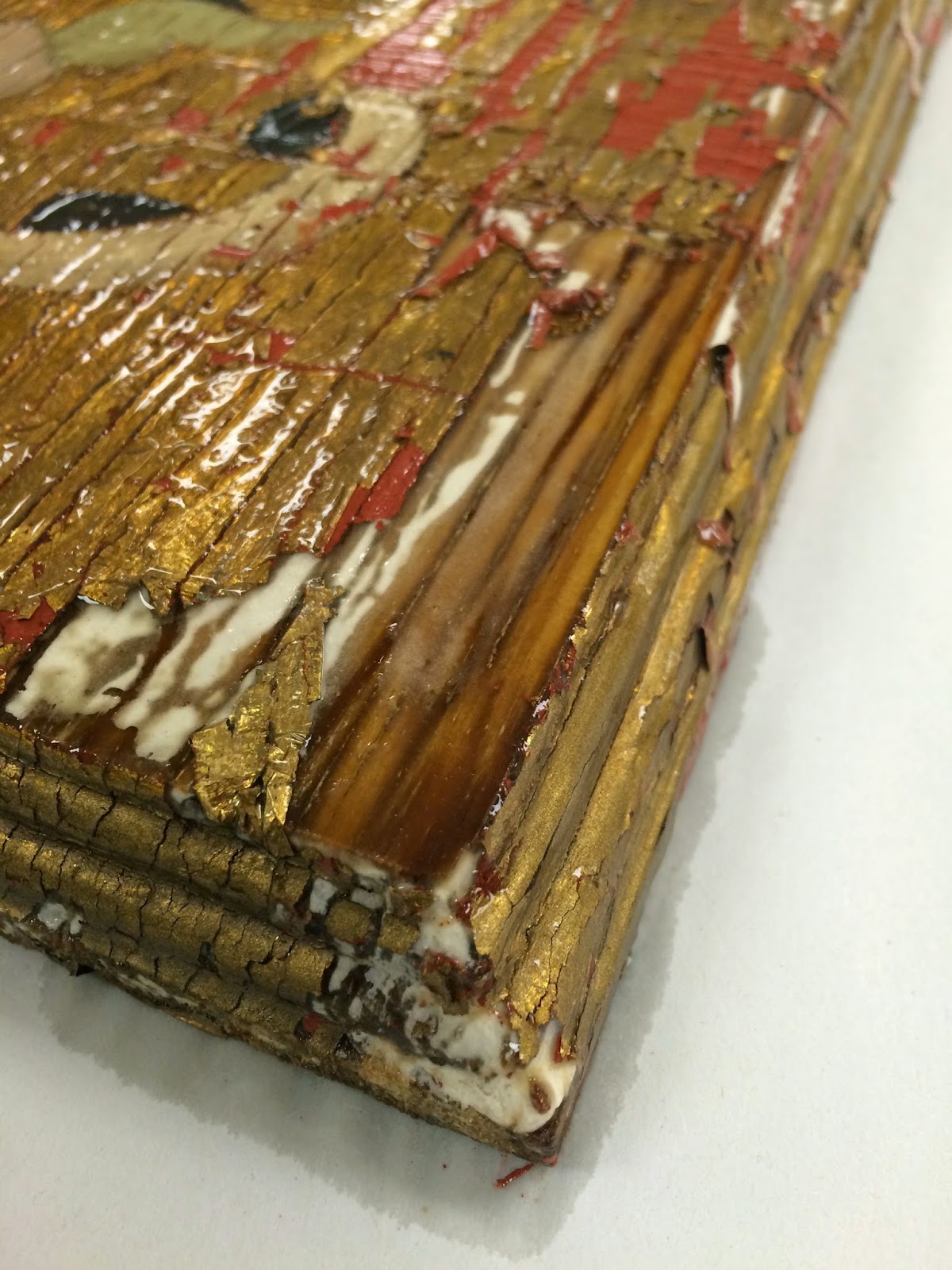What happens when art gets wet? We wanted to find out, so in our flood experiment we flooded and salvaged three different paintings.
Large Painting
We flooded a large painting with lake water.
To salvage the painting we had to carefully remove the staples holding in the cardboard backing to the frame and then remove the cardboard backing. Next, we could take the painting out of its frame. From there we set the painting on blotter paper and allowed it to lay flat and dry.
There was some water damage to the painting. You can see the areas of discoloration in this picture.
This is not something we could fix ourselves. If this was collection material we would have to make a discussion to keep this damage or send the painting to an art conservator. Since, this wasn’t collection material we didn’t have to make this decision but we did decide to keep the painting for re-use in our fire experiment.
Wood Panel Painting
We also flooded a wood panel painting (fondly dubbed “the world’s ugliest panel painting” by our class) in lake water.
The flooding caused some cracking of the wood. But the most damage to the panel painting actually came from our salvage efforts. Because the panel painting had been in lake water we wanted to rinse the painting before we set it out to dry. However, the water pressure coming out of the sink was too high and we caused damage to the painting in the lower corner where we had started rinsing.
Next, we sat the panel painting flat and allowed it to dry. Like the large panting, the damage was not something we could fix ourselves so we would have to make a decision to keep the damage or send it to an art conservator. For our purposes, we again decided to save the panel painting for our fire experiment.
Small Painting
We also flooded a small panel painting in clean water. This experiment showed us that sometimes luck can be on your side in a flood. This painting was not damaged at all.
There were two layers of cardboard behind the painting in the frame so we removed one to facilitate drying and set the painting in the frame flat to dry. Both and painting and the frame were undamaged and could be put back on the wall for display.
Large Painting
We flooded a large painting with lake water.
To salvage the painting we had to carefully remove the staples holding in the cardboard backing to the frame and then remove the cardboard backing. Next, we could take the painting out of its frame. From there we set the painting on blotter paper and allowed it to lay flat and dry.
This is not something we could fix ourselves. If this was collection material we would have to make a discussion to keep this damage or send the painting to an art conservator. Since, this wasn’t collection material we didn’t have to make this decision but we did decide to keep the painting for re-use in our fire experiment.
Wood Panel Painting
We also flooded a wood panel painting (fondly dubbed “the world’s ugliest panel painting” by our class) in lake water.
The flooding caused some cracking of the wood. But the most damage to the panel painting actually came from our salvage efforts. Because the panel painting had been in lake water we wanted to rinse the painting before we set it out to dry. However, the water pressure coming out of the sink was too high and we caused damage to the painting in the lower corner where we had started rinsing.
Next, we sat the panel painting flat and allowed it to dry. Like the large panting, the damage was not something we could fix ourselves so we would have to make a decision to keep the damage or send it to an art conservator. For our purposes, we again decided to save the panel painting for our fire experiment.
Small Painting
We also flooded a small panel painting in clean water. This experiment showed us that sometimes luck can be on your side in a flood. This painting was not damaged at all.
There were two layers of cardboard behind the painting in the frame so we removed one to facilitate drying and set the painting in the frame flat to dry. Both and painting and the frame were undamaged and could be put back on the wall for display.







No comments:
Post a Comment